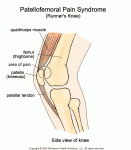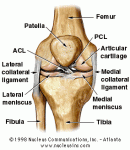
Edit:
This is an older article (almost a decade at the point of this edit) and is no longer in keeping with my belief system.
Pain is complex, and the following is not at all representative of that complexity.
Our sense of pain and dysfunction is highly influenced by biopsychosocial factors, and our own perceptions.
The reason I still keep this article up and others from a similar time are that I believe it’s important to be transparent about the fact that we in this industry are all fallible, and that there is no shame in admitting that you were previously speaking from a place of lesser knowledge.
Descriptions of the knee as easily damaged are inaccurate, and acting as a hinge are reductive. It’s actually a remarkably robust joint, in which structural abnormalities are common and often completely asymptomatic, with multiaxial function.
Thank you for looking, and I hope you enjoy a chuckle as you read 🙂
Many people experience knee pain, and through a variety of methods try to cope with that pain. They will do everything from applying ice to the knee to numb the pain, to ‘playing through the pain’ until it fades into the background. They rest or they work more, whatever seems to reduce the discomfort for that day or week. Then they finally seek help from a professional, they go to a doctor or a physiotherapist or a massage therapist; the practitioner examines the knee telling them that it seems fine and it’s probably just some sort of patello-femoral pain syndrome and they can’t do anything about it.
What is Patello-Femoral Pain Syndrome (PFS)?
Specifically, this condition occurs when the patella (kneecap) interacts with the femur (thighbone) in such a way that irritation results. The experience is generally a dull ache of varying intensity that can be affected by levels and types of activity. More generally speaking though, PFS is a condition that is commonly greatly over diagnosed or over assessed. Most often PFS is a symptom of some other dysfunction and not a direct pathology in and of itself.
What is it about the knee that makes it so tricky?
The knee is a joint made up of three bones, the patella (kneecap), the femur (thighbone), and the tibia (shinbone). The knee acts as a hinge swinging front to back with very little rotation or side to side flexion (known as valgation or varation), and bears a great deal of weight; that large but specific range of motion coupled with the stress on it makes the knee an especially vulnerable joint. It can be injured very easily and
due to its limited blood supply it heals VERY slowly, as well as the fact that it’s subject to wear through repetition (yes runners, this especially means you). The knee’s very specific range of extension and flexion means that it depends on the joints above and below to allow for side to side give, tilt, and rotation; this limited range of motion also means that any inwards or outwards deviation can cause great dysfunction at the knee. Any dysfunction in the joints above or below the knee along the movement chain can GREATLY affect the mechanics of the knee and result in pain.
What is it that causes one runner to experience PFS whereas another with a similar training and rehabilitation regimen doesn’t?
Why does it happen more often to street runners than to trail runners?
In the following series of articles I’ll be explaining some possibilities that are widely overlooked and how they can affect the knee. I will also be looking into possible treatment methods as well as alterations to training that may mitigate the return of such problems.




